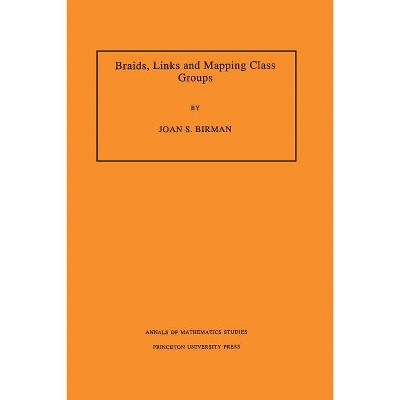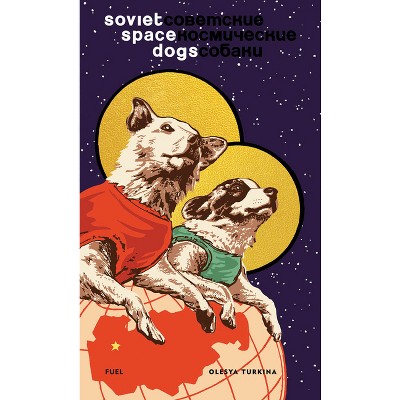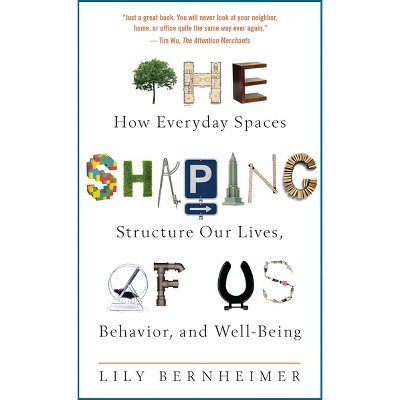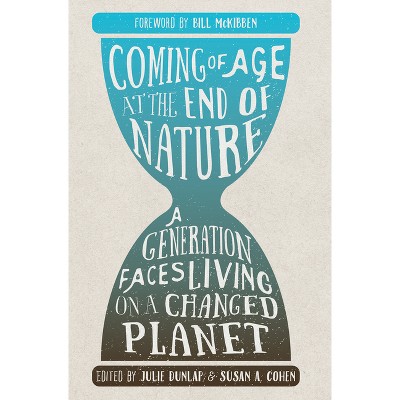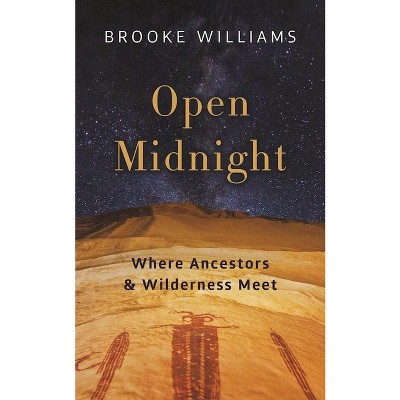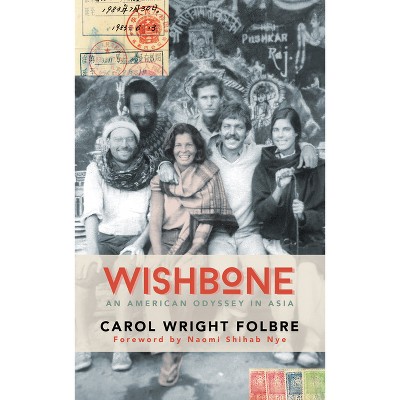Sponsored

Laika's Window - by Kurt Caswell (Paperback)
In Stock
Sponsored
About this item
Highlights
- Laika began her life as a stray dog on the streets of Moscow and died in 1957 aboard the Soviet satellite Sputnik II.
- About the Author: Kurt Caswell is a writer and professor of creative writing and literature in the Honors College at Texas Tech University, where he teaches intensive field courses on writing and leadership.
- 256 Pages
- Science, History
Description
About the Book
The unforgettable story of Laika--the Soviet space dog, the Cold War, and the Space Race between the United States and the Soviet UnionBook Synopsis
Laika began her life as a stray dog on the streets of Moscow and died in 1957 aboard the Soviet satellite Sputnik II. Initially the USSR reported that Laika, the first animal to orbit the earth, had survived in space for seven days, providing valuable data that would make future manned space flight possible. People believed that Laika died a painless death as her oxygen ran out. Only in recent decades has the real story become public: Laika died after only a few hours in orbit when her capsule overheated. Laika's Window positions Laika as a long overdue hero for leading the way to human space exploration. Kurt Caswell examines Laika's life and death and the speculation surrounding both. Profiling the scientists behind Sputnik II, he studies the political climate driven by the Cold War and the Space Race that expedited the satellite's development. Through this intimate portrait of Laika, we begin to understand what the dog experienced in the days and hours before the launch, what she likely experienced during her last moments, and what her flight means to history and to humanity. While a few of the other space dog flights rival Laika's in endurance and technological advancements, Caswell argues that Laika's flight serves as a tipping point in space exploration "beyond which the dream of exploring nearby and distant planets opened into a kind of fever from which humanity has never recovered." Examining the depth of human empathy--what we are willing to risk and sacrifice in the name of scientific achievement and our exploration of the cosmos, and how politics and marketing can influence it--Laika's Windowis also about our search to overcome loneliness and the role animals play in our drive to look far beyond the earth for answers.Review Quotes
"Sputnik 2 was a 'tipping point' for space exploration, but Laika's treatment was undeniably cruel. The book is meant as a testament to her experience." -- Scientific American "There's something here for readers with a wide range of interests, from space history buffs to humanities majors." -- National Space Society
"Caswell celebrates humankind's need to reach the stars and the little dog who helped make it possible." -- Booklist
"A powerful book about the first animal to orbit the earth. Caswell traces Laika's short life in space, the speculation surrounding her death, the impact of her journey on human exploration, and the political implications of the experiment." -- BOMB Magazine "Laika's Window is a compassionate exploration of the first animal to orbit the Earth, a little dog named Laika, who was deliberately sent to her death." -- Shelf Awareness "A remarkable and haunting story....a moving tribute to the mutually beneficial bond between man and dog." -- Publishers Weekly Kurt Caswell's detailed, deeply felt biography, Laika's Window, covers not just the most famous dog of the century but also her context. Brevity "a wide-ranging book with the famous Laika at the center." -- The Key Reporter, Phi Beta Kappa Society "This book is a rich bricolage of fact and metanarrative... Caswell doesn't let the reader off the hook with a simplistic and unknowing dog's final view of the world. Rather, through this beautiful, thoughtful exploration of the 'Muttnick' refugee from Moscow's cold streets and her journey to the edge of space, we're offered an opportunity to take the measure of our own humanity." -- Lone Star Literary "Caswell, captures this mysterious, sad and haunting tale from the early days of the Space Age." -- Oregon Public Radio"Kurt Caswell's empathetic history of the Soviet space dog Laika, the first animal to orbit Earth, is engaging, well researched, and provocative. Scientists gaze through the space capsule's small window at the dog before liftoff; later the pioneering dog gazes through the same window, watching the planet Earth pass silently below. What is interspecies cooperation? the author asks. What does it mean to explore? Where are we headed?" -- Barry Lopez, author of Arctic Dreams: Imagination and Desire in a Northern Landscape
"Caswell positions Laika as an animal astronaut rather than a lab animal and showcases the bond between Laika and the Soviet space scientists, redefining the story of Laika and the space dogs, the pioneers of all our space endeavors." -- Chris Dubbs, author of Animals in Space: From Research Rockets to the Space Shuttle
About the Author
Kurt Caswell is a writer and professor of creative writing and literature in the Honors College at Texas Tech University, where he teaches intensive field courses on writing and leadership. He is also on the faculty at the Vermont College of Fine Arts. His books include Getting to Grey Owl: Journeys on Four Continents, In the Sun's House: My Year Teaching on the Navajo Reservation, An Inside Passage, which won the 2008 River Teeth Literary Nonfiction Book Prize, and an anthology of nature writing, To Everything on Earth: New Writing on Fate, Community, and Nature, which he coedited with Susan Leigh Tomlinson and Diane Heuter Warner. His essays have appeared in ISLE, Isotope, Matter, Ninth Letter, Orion, River Teeth, and the American Literary Review. He lives in Lubbock, Texas.